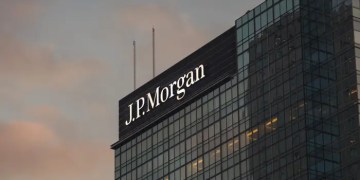Key Takeaways
Powered by lumidawealth.com
- Competition, not tariffs, is now the biggest pressure on U.S. auto insurers.
- Loss ratios have held steady or improved, but underwriting expenses are rising due to advertising and policy acquisition costs.
- Geico’s combined ratio rose to 84% from 81%, and Progressive cited “robust media spend.”
- Inflation in auto parts and repairs has finally caught up to insurance costs.
- Analysts expect rate cuts ahead and forecast a decline in P&C ROE from 12% (2025) to 10% (2026).
Tariff Fears Fade, Competition Heats Up
Car insurers began 2025 warning that tariffs on imported car parts could squeeze profits. So far, that risk has not materialized — but a price war is emerging instead.
Third-quarter filings show loss ratios steady or improving for Allstate, Geico, Progressive, and Travelers. But competition for customers is intensifying, with firms boosting marketing budgets and cutting premiums to defend market share.
“The competitive environment has gotten stronger,” said Progressive CEO Tricia Griffith, noting the company’s “robust media spend and competitive rates.”
Claims Costs Stable, But Margins Narrow
While repair inflation has cooled, underwriting margins are tightening due to acquisition expenses. Geico saw its combined loss and expense ratio climb three points, driven by higher marketing costs.
Meanwhile, Progressive issued a $950 million policyholder credit in Florida, triggered by state laws requiring refunds when margins exceed certain thresholds.
These dynamics suggest the industry’s post-pandemic profitability peak may be behind it.
Inflation Dynamics Shift
For the first time since 2022, vehicle repair and parts inflation matched or outpaced insurance inflation, signaling normalization. A year ago, insurance costs were rising 10 percentage points faster than repairs.
Auto insurers, who suffered heavy underwriting losses during the pandemic, regained profitability after aggressive rate hikes in 2023–2024. According to S&P Global Market Intelligence, Q2 2025 delivered the second-largest underwriting profit since 2001.
But as inflation moderates and competition rises, insurers are increasingly filing for rate decreases rather than hikes.
Consumer Behavior Shifts
Consumers are responding to price competition. Allstate reported that auto insurance shopping activity is up 9% year-to-date. Swiss Re economists found that average rate increases slowed to 2% in September from 10% a year earlier.
Analyst Tim Zawacki of S&P Global noted:
“Ultimately, there’s going to come a time when data supports significant rate decreases.”
Profit Outlook
The property-and-casualty industry’s return on equity is projected to decline from 12% in 2025 to 10% in 2026 as underwriting margins compress.
Insurers will seek stability through bundled policies and diversification into homeowners’ coverage.
However, whether the trigger is tariffs or pricing, the industry appears to have passed its profitability peak.

















